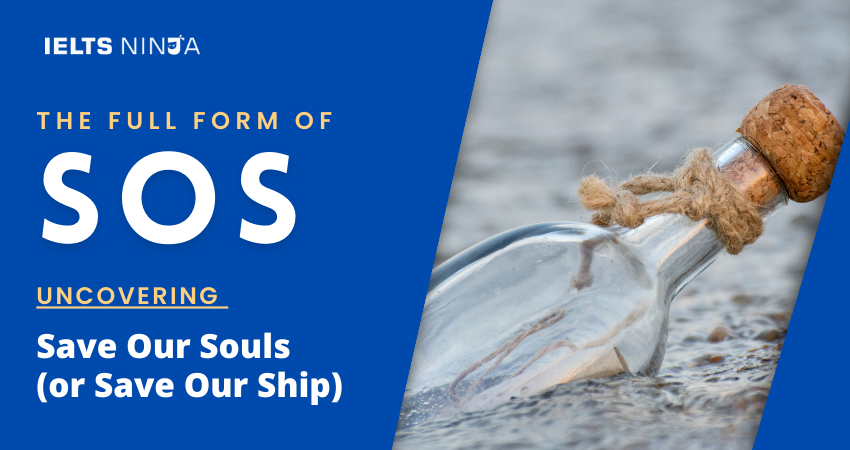The full form of SOS is a widely recognized distress signal used in emergencies, especially at sea, to request help and indicate that immediate assistance is required. It has also been interpreted to stand for “Save Our Souls / Save Our Ship” when used in a maritime context.
Key Details about SOS (Save Our Souls/Save Our Ship):
Here are key details about SOS:
Origin:
- The SOS distress signal is one of the most well-known and universal emergency signals in the world.
- It was formally introduced at the International Radiotelegraphic Convention of 1906 as a standard distress call.
Morse Code:
- SOS is transmitted using Morse code, a system of dots and dashes. In Morse code, SOS is represented as “… — …” (three short signals, three long signals, and three short signals).
- The distinctive pattern of three short signals, three long signals, and three short signals makes SOS easily recognizable even to those not familiar with Morse code.
Maritime Use:
- Historically, SOS was used by ships at sea to indicate that they were in immediate danger or distress. It was often transmitted via radio telegraphy or by signaling with lights, flags, or sound signals.
- The use of SOS in maritime emergencies signaled the need for assistance with navigation, safety, or rescue.
Universal Distress Signal:
- SOS is not limited to maritime emergencies and has been adopted as a universal distress signal in various contexts, including aviation and outdoor activities.
- It is used to call for help in situations where human life or safety is at risk, such as aircraft emergencies, wilderness survival situations, or medical emergencies.
Rescue Response:
When SOS is transmitted or displayed, it indicates that immediate assistance is required. Responding authorities and rescue teams treat SOS signals with the highest priority and mobilize rescue efforts accordingly.
Emergency Equipment:
SOS is prominently featured on various emergency equipment and devices, such as life jackets, emergency beacons, and survival kits, to help individuals signal for help in dire situations.
Also Read: Best online IELTS coaching & training academy
Alternative Interpretation of SOS:
While SOS is often associated with the phrase “Save Our Souls,” it has been suggested that it might have been chosen because it is easily recognizable and distinguishable in Morse code, making it an effective distress signal.
Use of Technology in SOS:
In modern times, the use of SOS has expanded with advancements in communication technology. It can be transmitted via various means, including radio, satellite communication, emergency beacons, and mobile devices.
Legal Obligation in SOS:
In many countries, mariners and aviators are legally obligated to respond to SOS distress signals and provide assistance when possible, as outlined in international maritime and aviation regulations.
Conclusion:
SOS, which stands for “Save Our Souls” or “Save Our Ship,” is an internationally recognized distress signal used in emergencies to request immediate assistance. Its universal recognition in Morse code makes it a crucial tool for alerting authorities and rescue teams when human life or safety is at risk, whether on land, at sea, or in the air.








